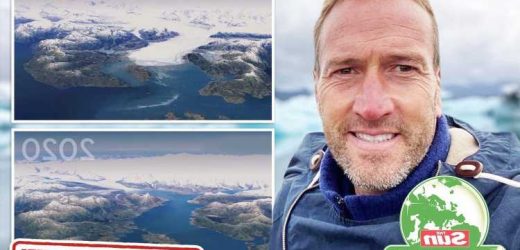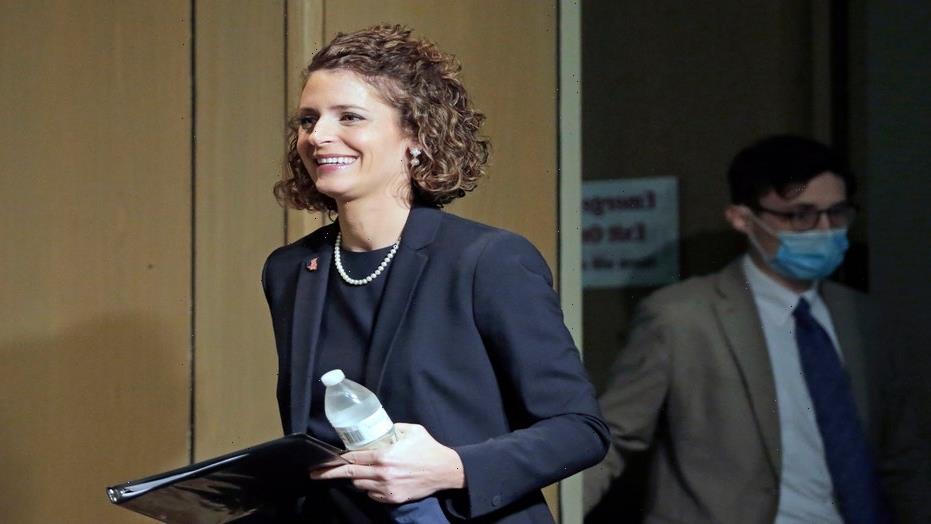THE blue wall of ice towered above me as I paddled my tiny canoe.
I was in a meltwater lake in Alaska, at the mouth of a mighty glacier. It creaked and groaned as it made its imperceptible movement forward.
A huge crack like thunder and a piece of glacier the size of a four-storey building broke off, crashing into the water and creating a mighty wave that threatened to capsize my boat.
I was on the front line of a new environmental crisis that threatens the world.
It is estimated there are nearly 220,000 glaciers, all of which are thinning or receding.
Last year I visited the site of Okjokull, in Iceland, the first glacier declared “dead” — 700 years old, it had melted. Disappeared. Gone.
The speed at which glaciers are melting has doubled in the past 20 years, which is causing sea levels to rise.
Estimations predict that the water from glaciers will contribute more than the Antarctic and Arctic ice cap melts combined.
As a nation with no glaciers, it may seem unconcerning. But imagine if you live in the Asian mountain ranges where the food security of billions relies on the glacial-fed Mekong and Yangtze rivers.
Millions will be affected by the initial flooding followed by a calamitous drought.
Rising global temperatures are fuelling this melt of 267billion tons of ice per year. Just one billion tons of ice would fill 10,000 aircraft carriers.
According to Robert McNabb, from the universities of Ulster and Oslo: “Over the past 20 years we’ve seen that glaciers have lost about 267 gigatonnes per year.
“If we take that amount of water and divide it across the island of Ireland, it is enough to cover all of Ireland in three metres of water each year.”
It should be troubling to us all. Glaciers have a purpose. They create a protective layer. The white reflects the sun and holds the permafrost in which carbon has been embedded.
Once we lose the ice, we lose the permafrost and the carbon is released into the atmosphere, further accelerating the decline.
In Switzerland, Italy and Germany worried locals have even wrapped glaciers in white tarpaulins trying to stop the thaw and preserve them.
Glaciers are our early warning system
According to the National Snow and Ice Data Centre, human activity in the past 200 years or so has increased the amount of CO2 in the atmosphere by 40 per cent, and it is these heat-trapping gases that are responsible for climate warming and glacial melting.
Glaciers matter. Some of them took centuries to develop, yet they can vanish in just a few years. Glaciers are indicators of climate change. They are our early warning system.
And they provide drinking water, irrigation and hydroelectric power. We need them.
Half the world’s glacial melt is in Canada and the US. Burning oil, gas and coal is the prime cause. We need to wean ourselves off fossil fuels. We need to find ways to meet our climate targets and stop the melt.
CO2 emissions continue to rise. We are consuming too much and emitting too much. In November, world leaders will gather in Glasgow for COP26 to discuss what we can do.
Although it might feel like an impossible task ahead, we can all do our bit. Change your consumer habits to need over want. Do you “need” that new dress or shirt or only “want” it?
Switch to electric cars, heat exchange for heating. Waste less. Switch off lights. Fly less. Imagine if we all reduced our carbon footprint by just ten per cent. We can do this.
It can be difficult to see that change when we are still bundled up in this April chill, but make no mistake, the ice is melting and the world needs to act.
I have seen glaciers in retreat all around the world. Almost every glacier has left a “tide” mark from its retreat. It’s happening everywhere.
I have witnessed the retreat or death of glaciers in the Alps, the Andes and Alaska. The bright white ice replaced by the blackened, slushy, skeletal remains.
In the Himalayas, where climbers must navigate the infamous Khumbu Icefall, a glacier, the ice is also retreating, increasing the danger for those attempting to climb.
The glacier has melted at such a worrying rate over the past ten years it could eventually be unnavigable. The meltwater will lead to sea level rises, coastal erosion that will affect sea life and coastal communities.
Land, homes and livelihoods will be lost here and across the planet. We must save our glaciers to save ourselves.
Ten ways to save cash and planet
By Angela Terry
THE Sun launched Green Team last October urging readers to make small changes that would reduce their CO2 footprint.
Here are ten things to do NOW to help save the glaciers and save you money:
- Ditch the SUV or any gas-guzzling vehicles. SUVs are the second biggest contributor to rises in global greenhouse gas emissions but they are growing in popularity. Carbon emissions create a warming blanket around the earth that melts glaciers.
- Switch to an electric vehicle if you can. Which? says SUVs cost around £400 more per year to run than a standard car. An EV costs £800 less than a standard car. The Government electric vehicle grant offers discounts on affordable EVs and a plug-in grant for a rapid charger at home.
- Hitch up the caravan. We all love the idea of jetting off again but return flights for a family of four to Florida, for example, pump more than nine tonnes of CO2 into the atmosphere – the same as charging nearly 1.15million smartphones.
- Hit the charity shops. These are full of new stock, as the whole country has had a clearout during lockdown. Buying bargain secondhand clothing cuts the emissions created by fast fashion.
- Ensure loft insulation is 30cm deep. If you lose heat through your roof you use more energy to warm your home, burning more fossil fuel and adding to carbon emissions. Effective insulation will cut your energy bill and help save the planet.
- Try a low-carbon diet. Intensive farming, packaging and transport mean the food system is responsible for a third of all greenhouse gas emissions. Shop local, avoid food waste and try meat-free Mondays.
- Wash at 30C or even 20C to save energy and money. Doing the laundry at 30C can be a third cheaper than doing it at 40C. For lightly soiled clothes, try 20C and always wash a full load.
- Grow your own. Now is the perfect time to sow lettuce seeds. You only need a window box and “cut and come again” varieties will stop you buying and throwing away plastic salad bags all summer.
- Switch off when idle. Turning off TVs, games consoles, chargers and the microwave when not in use will save up to £80 a year, says the Energy Savings Trust.
- Speak to your workplace. Families can take big steps to help protect the planet but is your employer doing the same? Ask if they could be doing more.
- For more ideas, go to onehome.org.uk.
Source: Read Full Article






